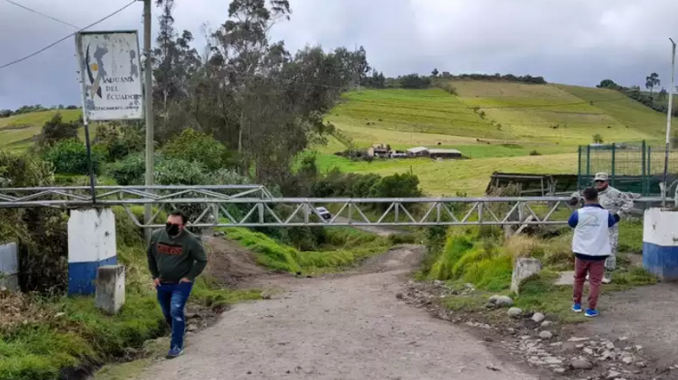
Since the closure of the borders, due to the Covid-19 pandemic, illegal steps have increased. The 116 routes detected are used by smugglers, migrants and drug traffickers. Members of the Armed Forces found weapons and substances subject to control in the homes of towns near neighboring countries.
On the other hand, criminal organizations try to seize the southern border. Extortionists, Ecuadorians and Peruvians, build illegal steps that allow the passage of illegal activities. Germánico Espinoza, a member of the intelligence brigade 1 of El Oro, declared:
“There are people linked to criminal organizations; people persist in rebuilding them, in putting them back up ”.
Espinoza said that within the car control operations they detected packages of cocaine and marijuana that tried to enter Ecuador. The houses in nearby towns are even used as warehouses to store drugs and weapons.
In the case of migration, Rogelis Carmona, a member of the migrant association, said that between 600 and 700 people cross a month.
In addition, in the Mercado Nuevo sector, people cross the border on a thin wooden plank in broad daylight. If people try to cross products, they must pay a “toll” that ranges between USD 2 and USD 0.50. An Ecuadorian merchant stated:
“If we see policemen, we wait for them to leave to put the board back on the canal.”
Edith, another Ecuadorian merchant, exposed the risks of illegal crossings. She lost the money for 400 cans of tuna; Furthermore, her children were assaulted while trying to send their products to Peru.
Some of the products that are smuggled between Ecuador and Peru are the following: tuna, sacks of sugar, clothing, onions, grapes, apples, rice, fuel cans and gas bottles for domestic use. At the northern border, the following were seized: cigarettes, textiles, medicines and supplies, electronic items, footwear, fruits, groceries and liquors.
In southern Ecuador, the main illegal crossings are located in areas of Puerto Hualtaco and Pitahaya, Canal Internacional, Vía La Huada, El Muro, Canal de Zarumilla, Lomo del Zorro and Camaroneras. On the other hand, in the north of the country, the most used roads are Río Carchi, El Brinco and Cuatro Esquinas.
Customs has captured around USD 13.7 million in products this year.

Be the first to comment